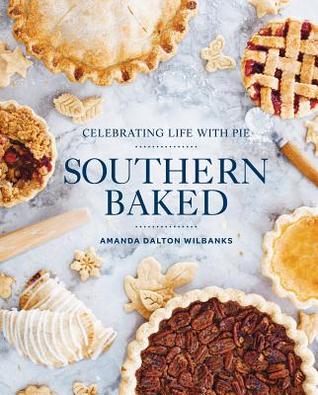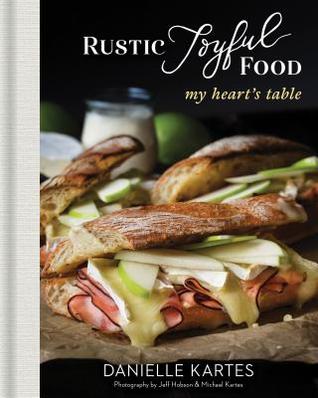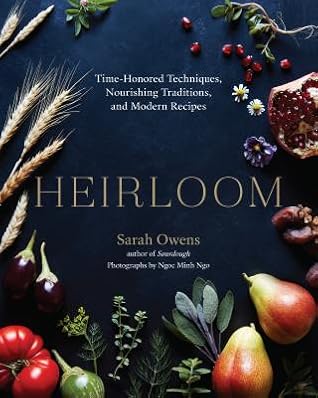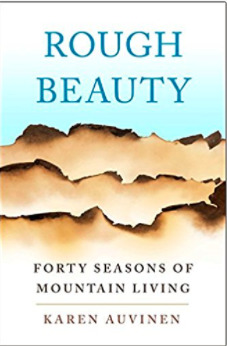The Sun Does Shine: how I found life and freedom on death row by Anthony Ray Hinton (Evening Edition book club)
In 1985 Anthony Ray Hinton was arrested for 3 robbery murders. While he was scared he was innocent and had an airtight alibi - he had been at work on the night of the 3rd murder. But, his innocence did not change the views of the Alabama courts. Due to a joke of a court-appointed attorney and falsified evidence by the Alabama prosecutors Hinton is sentenced to the death penalty. His first three years on death row were dark. Hinton was furious at what had happened to him and all he could think about was getting revenge on the people who fabricated evidence and ignored his innocence. Then he had a breakthrough - he could let the state of Alabama kill him the whole time he was in prison or he could live inside himself the best he could under these circumstances. After his appeal with the same court-appointed attorney is denied his case is taken up by Bryan Stevenson of the Equal Justice Initiative and for the next 27 years he goes through appeal after appeal trying to get higher courts to overturn his conviction. Hinton spends 30 years on death row in mostly solitary confinement. His mental strength and faith were the main things that kept him going. He also had an incredible friend, Lester, who came to EVERY SINGLE VISITING DAY and after 30 years was able to pick Ray up when he was finally released. This story is heart-breaking and terrifying and should be required reading for EVERYONE. After all Hinton went through the state of Alabama never apologized or gave him any kind of compensation for spending 30 years on death row as an innocent man. This should definitely make for a good book club discussion.
There are LOTS of quotes I liked:
"McGregor [the prosecutor] may have won, but I don't think he or the judge realized that by sentencing me to death, they were giving me the only shot I had at proving my innocence. Now that I was sentenced to die, I would be guaranteed an appeal and guaranteed some representation by my attorney. If I had been sentenced to life, I would have had to hire an attorney to appeal." (p. 14
"Acker [a police detective] turned around and looked me in the eye for the first time since I had told him I was at work on the twenty-fifth. 'You know, I don't care whether you did or didn't do it. In fact, I believe you didn't do it. But it doesn't matter. If you didn't do it, one of your brothers did. And you're going to take the rap." (p. 51)
"...a man laughed. A real laugh. And with that laughter, I realized the State of Alabama could steal my future and my freedom, but they couldn't steal my sense of humor. I missed my family. I missed Lester. But sometimes you have to make family where you find family, or you die in isolation. I wasn't ready to die. I wasn't going to make it easy on them. I was going to find another way to do my time. Whatever time I had left." (p. 118)
"Bring in the books, I thought. Let every man on the row have a week away, inside the world of a book. I knew if the mind could open, the heart would follow. It had happened to Henry. Look at him sitting here in a locked room with five black men who had nothing to lose...I had no anger toward Henry. He had been taught to fear blacks. He had been trained to hate. Death row had been good for Henry. Death row had saved his soul. Death row had taught him that his hate was wrong." (p. 153)
"Compassion doesn't know what color you are, and I think Henry felt more love from the black men on death row than he ever did at a KKK meeting or from his own father and mother...Henry was the first white man to be put to death for killing a black in almost eighty-five years. His death meant something to people outside of the row. It was making a point about racism and justice and fairness like all the books we had been reading in book club, but to us, it was a family member being killed. There's no racism on death row." (p. 161)
"'Yes, I'm firing you. Thank you for everything up until now, but I'd rather die for the truth than live a lie. I'm not agreeing to life without parole. I'll rot and die in here before I agree to that. But thank you for working so hard.'...I would bend over when the guards made me do it. I had no choice. But I wasn't going to let anybody else shake me down. I wasn't ready to give up on my life. I was going to walk out of this place as an innocent man, or I was going to die trying. Nothing more and nothing less." (p. 164-65)
"I wasn't surprised that the State was doing its best to keep me locked away and quiet. It was what the court had done from the beginning. It was still a lynching. It was taking decades to get the noose wrapped just right. I also wasn't naive. The State was unwilling to admit it had made a mistake. Alabama would rather stay wrong than admit it had been wrong; rather accept injustice than admit that it had been unjust." (p. 185)
[From an article Bryan Stevenson wrote for the Birmingham News] "With 34 executions and seven exonerations since 1975, one innocent person has been identified on Alabama's Death Row for every five executions. It's an astonishing rate of error. What most defines capital punishment in Alabama is error. Reviewing courts have concluded nearly 150 Alabama capital murder convictions and death sentences have been illegally and unconstitutionally imposed. Reversals outnumber executions 5 to 1. While some states have seriously examined their death penalty systems and pursued reforms, Alabama leaders have recklessly called only for speeding up the execution process." (p. 210)
[After Hinton's release from prison, his first night in a real bed] "It was all strange, and I could feel the anxiety start again. I began to breathe heavy and fast. What was happening to me? I wondered if I should wake up Lester and have him take me to the hospital. Was this how it ended? The day I get my freedom, I have a heart attack? I tried to steady my breath, but it was like the walls were moving in and out and the room was spinning. I didn't like this. I got out of bed and ran into the bathroom. I locked the door behind me and sat on the floor with my head between my knees. Immediately, my heart stopped pounding and my breathing slowed. I lifted my head and looked around. The bathroom was almost exactly the same size as my cell. I stretched out on the floor, my head resting on the bath mat. I would sleep in here tonight. This felt like home." (p. 236)
"I forgive them. I made a choice after those first difficult few weeks at Lester's when everything was new and strange and the world didn't seem to make sense to me. I chose to forgive. I chose to stay vigilant to any signs of anger or hate in my heart. They took thirty years of my life. If I couldn't forgive, if I couldn't feel joy, that would be like giving them the rest of my life. The rest of my life is mine. Alabama took thirty years. That was enough." (p. 238)

Clock Dance by Anne Tyler (Books & Banter book club)
Willa Drake grew up with a most likely mentally ill mother and a very enabling father. While she didn't realize how abusive her mother was as a child, I'm not sure that she really did understand that as an adult either. She married her college boyfriend and gave up her dreams of working as a linguist to follow him to California. She had two sons and was widowed at 41. The book tells 3 defining moments for Willa - when she is 11, 21, and 41 - then picks up with the present when she is 61 and remarried. Her son's ex-girlfriend is injured and needs someone to care for her 9-year-old daughter. A neighbor mistakenly thinks Willa is the child's grandmother and calls her. Willa is feeling at loose ends and decides on a whim to go and ends up really enjoying her time with Cheryl. Willa's current husband on the other hand is not happy about this recent turn of events. Willa tends to go along with whatever the men in her life want her to do and now after this she has to determine what SHE really wants for one. The ending is ambiguous, but I'm hoping that for once Willa does what she wants for a change.
A quote I liked:
"Sometimes Willa felt like she'd spent half her life apologizing for some man's behavior. More than half her life, actually. First Derek and then Peter, forever charging ahead while Willa trailed behind picking up the pieces and excusing and explaining." (p. 187)

Inheritance: a memoir of genealogy, paternity, and love by Dani Shapiro
How much of your identity is tied to your biological DNA? Dani Shapiro grew up in an Orthodox Jewish house and knew her family lineage. But, she never looked Jewish - she was fair with blonde hair and blue eyes. As the only child of older parents she often felt out of place, many of the other Orthodox Jewish families had several children. But, she never questioned her biological identity in her family. Then on a whim she and her husband decided to do Ancestry DNA analysis and when the results came back they rocked her world - she was not biologically related to her father. Both of Shapiro's parents were dead, so she couldn't get answers from them. As a writer and her husband with a background in journalism, the couple began to research and very quickly found information based on a few scraps of information Shapiro remembered from her mother. She even found her biological father within 2 days of finding out this information. But, this was just the tip of the iceberg for Shapiro - she had to figure out how to deal with this bombshell and what it might mean for her family. As she sorts through information and begins to communicate with her biological father and other family members, she is also working through feelings about what makes a family. A fast read about how one family's secret impacted several people over fifty years in the future.
Some quotes I liked:
[During a conversation with her father's only living sibling] "She trained her whole ninety-three-year-old self, every cell in her being, in the direction of consoling me. Every bit of energy. It was the purest manifestation of love I had ever experienced." (p. 138)
"Those early months were taken up first with the disbelief that my parents could have ever knowingly participated in such a deceit, and then later with anger and sorrow that they had made the choices they did - even though those choices resulted in my existence...But now I was coming to the awareness that my young parents-to-be had none of these tools. They possessed only their own fear, shame, despair, and desire for a child at any cost. They joined hands and went deeper into the wilderness until the only way out was through. There was no going back. And then they pretended it never happened. They never spoke of it again - not to each other, not to family, nor to friends." (p. 222-23)

The Friends We Keep by Jane Green
Maggie, Evvie, and Topher meet their first year at University and become inseparable. They end up renting a house together and living together as an odd little family for the rest of college. After college they go their separate ways - Evvie becomes a model in New York, Topher gets into acting and is cast in a soap opera, and Maggie married Ben, her crush throughout college. The three friends lose touch, but decide to reconnect at their 30th University reunion. After the reunion some devastating secrets come out that will change everyone's lives.
I love Jane Green and was really looking forward to this book, but it was very disappointing. I won't give anything away, but the main "secret" is pretty big and devastating. There is ABSOLUTELY NO WAY their friendship would have survived and continued as it does in the book. I saw this coming from the end of the first section of the book and knew it was going to be like a Hallmark movie where everything works out perfectly in the end. Very unrealistic and not like most of Green's other books. I'll keep reading Jane Green, but I wouldn't recommend this one.

American Predator: the hunt for the most meticulous serial killer of the 21st century by Maureen Callahan
When Samantha Koenig disappeared from the coffee stand where she worked in Anchorage, Alaska it seemed like she might be a runaway at first. But, then her boyfriend saw a masked man rummaging through the truck they shared and they got a ransom note. Samantha's kidnapper, Israel Keyes, was caught in Texas after the police followed ATM withdrawals and surveillance footage. Keyes had no criminal history and was barely on the radar at all, but he admitted to kidnapping and killing Samantha. The FBI realized that this was not the first time Keyes had killed and they were soon engaged in a cat and mouse game with Keyes to see if they could get him to admit to any other murders. Keyes traveled all over the country and would bury "kill kits" in remote places. These kits would have a handgun, suppressor, ammunition, knife, and zip ties - everything he needed to kidnap and kill someone. Keyes eventually admitted to a double murder in Vermont and alluded to several other murders, rapes, and kidnappings and police managed to connect several missing persons cases with Keyes timelines and travels over the years. Keyes committed suicide in prison, so the full extent of his crimes may never be known. But, what the police were able to piece together is terrifying because Keyes picked people at random to kill and was meticulous in his planning and cover ups.
Some quotes I liked:
"Before his death in 2016, [Roy] Hazelwood [a pioneering FBI behavioral profiler] spoke about Keyes. Hazelwood's decades of service had left him with a cynical view of the FBI's truthfulness in general, and he believed stranger abductions are far more common than the Bureau insists. He was convinced that the proliferation of hard-core pornography, so easily and anonymously accessible online, has contributed to increasingly sadistic crimes and murders. He believed that technology, the mainstreaming of violent pornography, advances in ever-faster travel, and an overall culture of misogyny, from politics to entertainment, would only continue to breed more aberrant and dangerous criminals. He made this prediction in 2001." (p. 179)
[In interviewing one of Keyes only friends during his military service] "Are you surprised, they asked, that Keyes has been arrested for kidnapping and murder? 'I'm surprised he...got caught,' Perkins said. 'He was smarter than that.'" (p. 234)
[Keyes was almost able to escape at a court hearing in Anchorage] "Bell's warnings [to the Alaska corrections officers] had not been taken seriously. In fact, they had not been taken at all, because that was how Keyes had nearly escaped. In the three hours between transport and the court hearing, Keyes had been given lunch, the standard meal for the standard inmate: a brown bag containing a carton of milk, an apple, and a sandwich wrapped in cellophane. Keyes had used his stored-up pencil slivers to pick the locks on his cuffs and leg irons, then used the cellophane to make his leg irons look tied together." (p. 238)
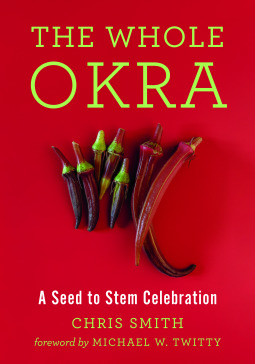
The Whole Okra: a seed to stem celebration by Chris Smith
If you love okra and want to know literally EVERY SINGLE THING you can make, eat, and do with okra this is the book for you. Chris Smith is British, so he did not grow up eating okra. But, he married a woman from South Carolina and once he had eaten really good okra he was hooked. Smith has done things with okra that I would never have dreamed of doing. He covers the history of okra, the slime issue/factor, how to best cook and preserve okra, eating okra flowers and leaves, making and using okra seed and pod flour, making paper from okra stalks, and of course how to best grow your own okra. There are several recipes included - some like the okra face mask and hair treatment might be a bit much for some people. But, there are some recipes I'd like to try and this book is definitely a great exploration of all the wonders that is okra! It was also cool that Smith and his family now live in Asheville, so lots of the resources and restaurants he referenced are ones I could actually check out. Overall, a really thorough look at one of the South's favorite vegetables.

Just Mercy: a story of justice and redemption by Bryan Stevenson
Bryan Stevenson enrolled in law school on somewhat of a whim, which is incredible given what you will learn about him in this book. Once in law school a lot of the courses seemed arbitrary and not applicable for the real world. In his second year of law school Stevenson signed up for a one-month intensive course on race and poverty litigation that required students to work with an organization doing social justice work. Stevenson ended up interning with the Southern Prisoners Defense Committee (SPDC) in Atlanta, Georgia. That was where he met his first death-row inmate and that was also where he found his life's calling. After finishing law school Stevenson worked for SPDC in Atlanta, but so many of their cases dealt with prisoners in Alabama that he ended up moving to Alabama and opening his own non-profit legal organization, the Equal Justice Initiative (EJI). Since the very beginning of EJI when it was just Stevenson, one other lawyer and a receptionist they have been inundated with inmates and family members trying desperately to find someone to help them in the brutal legal system. Stevenson tells the story of EJI and his work through the story of Walter McMillian, one of the innocent people Stevenson is able to get released from death row. McMillian's story is interspersed with other aspects of social justice and race that Stevenson and EJI have worked on like child imprisonment, mentally handicapped prisoners on death row, and arbitrarily long prison sentences for minor infractions - almost all disproportionately for African-American or other minority groups. The stories in this book are heartbreaking and infuriating. To read story after story after story of poor people being railroaded by the state is just mind blowing. Equally mind blowing is how often the state turns a blind eye to this injustice even in the face of compelling evidence of innocence over and over and over again. This is a hard book to read, but it's an important book to read and should be required reading for EVERYONE. The world needs more people like Bryan Stevenson.
Some quotes I liked:
"It wasn't until 1967 that the United States Supreme Court finally struck down anti-miscegenation statutes in Loving v. Virginia, but restrictions on interracial marriage persisted even after that landmark ruling...Even though the restriction couldn't be enforced under federal law, the state ban on interracial marriage in Alabama continued into the twenty-first century. In 2000, reformers finally had enough votes to get the issue on the statewide ballot, where a majority of voters chose to eliminate the ban, although 41 percent voted to keep it. A 2011 poll of Mississippi Republicans found that 46 percent support a legal ban on interracial marriage, 40 percent oppose such a ban, and 14 percent are undecided." (p. 29)
[In the court proceeding to present the evidence that showed Walter McMillian was innocent] "In the last pretrial appearance, the judge had asked, 'How much time will you need to present your evidence, Mr. Stevenson?' 'We'd like to reserve a week, your honor.' 'A week? You've got to be joking. For a Rule 32 hearing? The trial in this case only lasted a day and a half.' 'Yes, sir. We believe this is an extraordinary case and there are several witnesses and -' 'Three days, Mr. Stevenson. If you can't make your case in three days after all of this drama you've stirred up, you don't really have anything.' 'Judge, I -' 'Adjourned.'" (p. 164-5)
"The tapes that Tate, Benson, and Ikner had made when they interrogated Myers were pretty dramatic. The multiple recorded statements Myers gave to the police featured Myers repeatedly telling the police that he didn't know anything about the Morrison murder or Walter McMillian. They included the officers' threats against Myers and Myers's resistance to framing an innocent man for murder...All of these recorded statements were typed, exculpatory, and favorable to Walter McMillian, and none of them had been disclosed to McMillian's attorneys, as was required." (p. 182) [also infuriating is that the prosecutor, Tate, had immunity and could not be sued for damages after McMillian was released from prison]
"Today over 50 percent of prison and jail inmates in the United States have a diagnosed mental illness, a rate nearly five times greater than that of the general adult population. Nearly one in five prison and jail inmates has a serious mental illness. In fact, there are more than three times the number of seriously mentally ill individuals in jail or prison than in hospitals; in some states that number is ten times...when I still worked in Atlanta, our office sued Louisiana's notorious Angola Prison for refusing to modify a policy that required prisoners in segregation cells to place their hands through bars for handcuffing before officers entered to move them. Disabled prisoners with epilepsy and seizure disorders would sometimes need assistance while convulsing in their cells, and because they couldn't put their hands through the bars, guards would mace them or use fire extinguishers to subdue them." (p. 188)
"Terrorist groups like the Ku Klux Klan cloaked themselves in the symbols of the Confederate South to intimidate and victimize thousands of black people. Nothing unnerved rural black settlements more than rumors about nearby Klan activity. For a hundred years, any sign of black progress in the South could trigger a white reaction that would invariably invoke Confederate symbols and talk of resistance. Confederate Memorial Day was declared a state holiday in Alabama at the turn of the century, soon after white rewrote the state constitution to ensure white supremacy. (The holiday is still celebrated today.)...In fact, it was in the 1950's, after racial segregation in public schools was declared unconstitutional in Brown v. Board of Education, that many Southern states erected Confederate flags atop their state government buildings. Confederate monuments, memorials, and imagery proliferated throughout the South during the Civil Right Era. It was during this time that the birthday of Jefferson Davis, the president of the Confederacy, was added as a holiday in Alabama. Even today, banks, state offices, and state institutions shut down in his honor." (p. 192-3)
"...even today almost half of all states (twenty-two) offer no compensation to the wrongly imprisoned. Many of the states that do authorize some monetary aid severely limit the amount of compensation. No matter how many years an innocent person has been wrongly incarcerated, New Hampshire caps compensation at $20,000; Wisconsin has a $25,000 cap; Oklahoma and Illinois limit the total amount an innocent person can recover to under $200,000, even if the person has spent decades in prison. While other states have caps of more than a million dollars, and many have no cap at all, several states impose onerous eligibility requirements. In some jurisdictions, if the person lacks the support of the prosecuting attorney who wrongly convicted him, compensation will be denied." (p. 245)
"The power of just mercy is that it belongs to the undeserving. It's when mercy is least expected that it's most potent - strong enough to break the cycle of victimization and victimhood, retribution and suffering. It has the power to heal the psychic harm and injuries that lead to aggression and violence, abuse of power, mass incarceration." (p. 294)

The Next Right Thing by Emily Freeman
I read this book as part of a women's Bible study at my church, so I read it in 4 chapter increments each week. When I first started reading it I wasn't sure how much I would get out of it because I don't have trouble making decisions, which seemed to be somewhat the focus of the book. But, there was still a lot that I found helpful and through the course of reading the book for this class I did find myself having to make some harder decisions, so it was helpful to be reading and discussing during that time. The overall message I got from the book is there is not one perfect right decision for everything. If you're trying to follow God prayerfully doing The Next Right Thing is all we can do. The only downside of reading a book only 4 chapters a week is that it's harder for me to remember all the things I liked about it because now it's been so long since I started reading it. But, I did like it and I would read something else by this author again.
